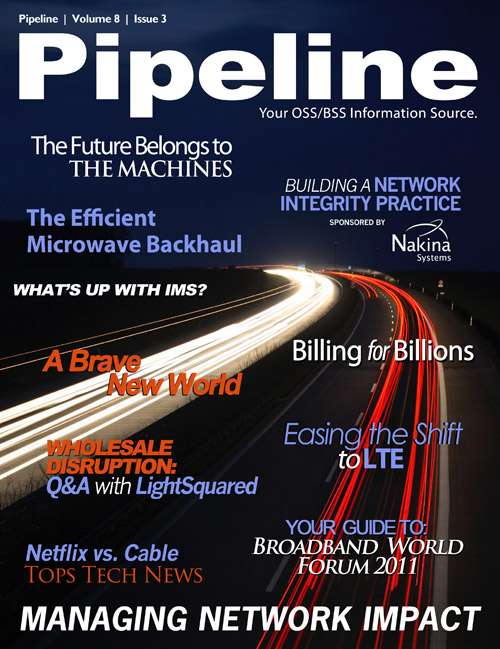By: Jesse Cryderman

As we stand on the cusp of an all-IP world, it's hard to imagine a world without the internet or a land
before mobile. The flammable combination of Web 1.0 with the launch of the mobile era set off a
communications network big bang that has literally changed the world in 20 years. Much like the
universe itself, global communication networks are expanding rapidly; so fast that IP addresses ran out
this year, necessitating a change to IPv6. Astronomy students can bicker about whether the fabric of
space itself is expanding at 71 or 74 km per second per megaparsec, but the speed of global network
growth is fairly certain.
According to Melanie Posey, Research Vice President at IDC, “The worldwide base of consumer
broadband subscribers will expand from 485 million in 2010 to 666 million in 2014, and
consumer mobile data connections will jump from 2.1 million to 3.84 million during the same
timeframe...Internet traffic, on a worldwide basis, is set to grow from a daily average of 168 petabytes
to nearly 794 petabytes in 2014...”
If framing the scope of network growth in terms of petabytes doesn't work for you, this might: by 2015
the following will occur:
- 470% growth in global internet traffic; the equivalent of 204,100,000 people streaming Internet HD video simultaneously, all day, every day.
- Global IP traffic will be equivalent to 28 million DVDs downloaded per hour.
- Mobile data will experience a 26-fold increase.
- Globally, there will be 15 billion networked devices, up from 7 billion in 2010.


To keep up with this explosion, carriers will ramp up average broadband speeds by about 300-500%, and mobile broadband in 2015 will match current fixed line speeds. As Sandvine Executive Marie Fiala Timlin summarized, “Undoubtedly there will continue to be demand for more Internet coverage, at higher speeds, as applications continue to evolve and consumers get hooked on the “Internet anytime anywhere” lifestyle.”
All of this presents some major challenges for CSPs. As Carlos Rodriguez, Manager of Regulatory Affairs at Telefónica USA pointed out, telcos need to make changes to keep revenue ahead of costs. “Costs grow as traffic across the networks grows, but revenues have been stagnating,” Rodriguez said, via the Cisco virtual forum in June. “If not changed, we may face a period where firms are simply unable to invest in improving network infrastructure due to a lack of funding.”
While the challenges are enormous, they are certainly not insurmountable, and standing ready on the sidelines are myriad OSS solutions that can ensure the global communications networks can continue expanding like our universe, and not a supernova.





